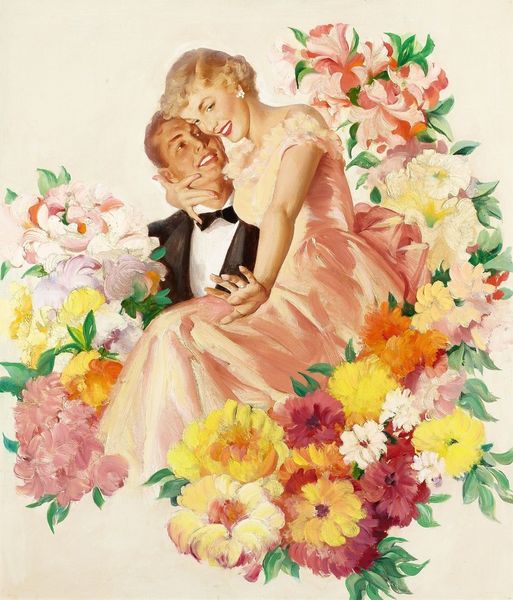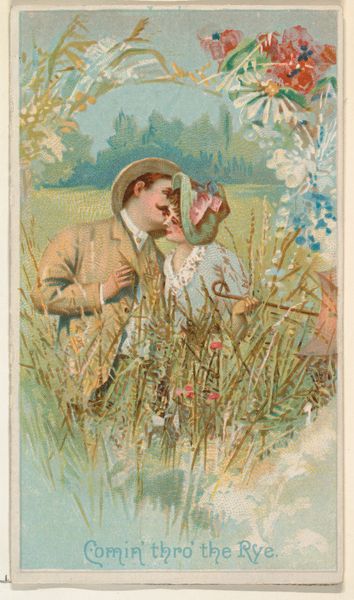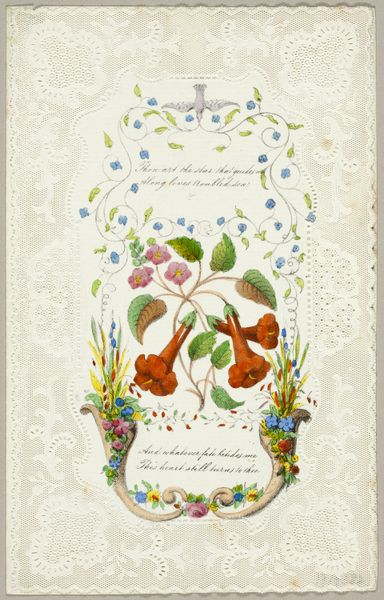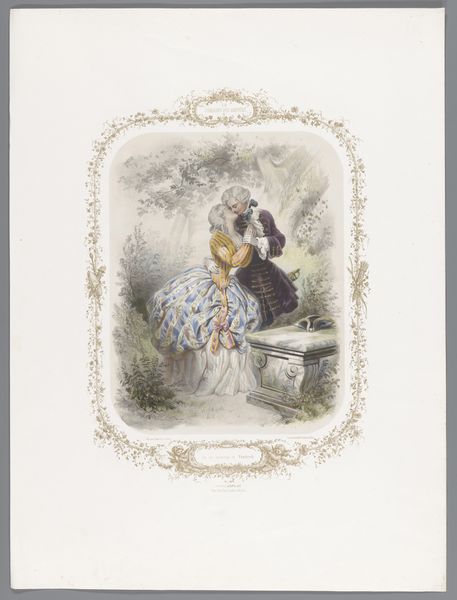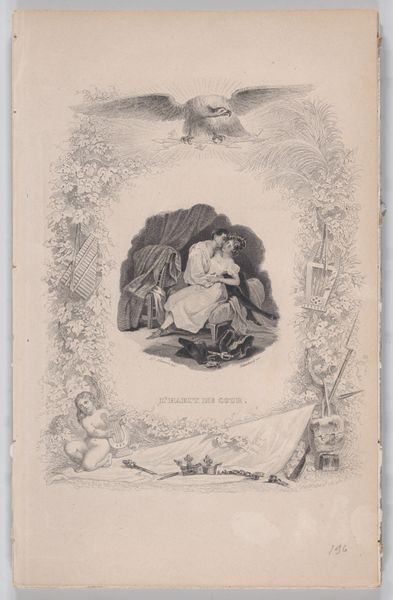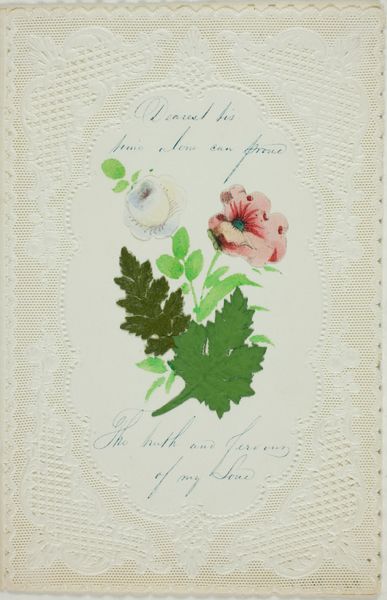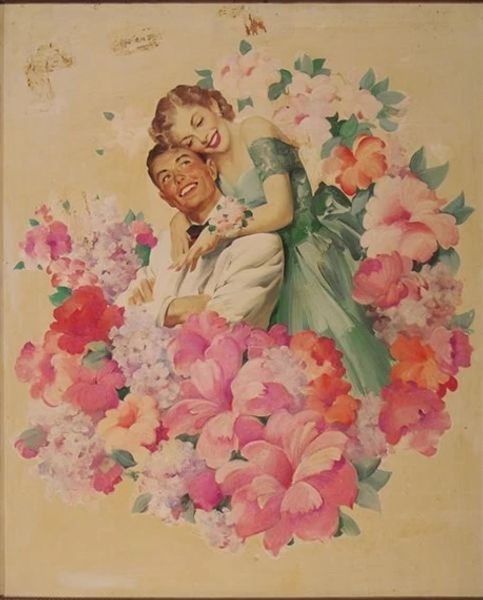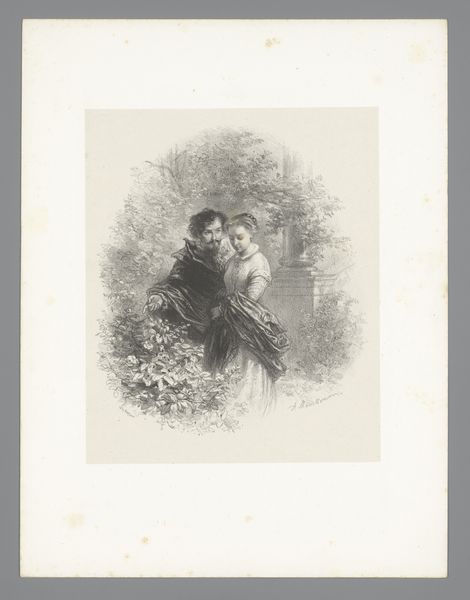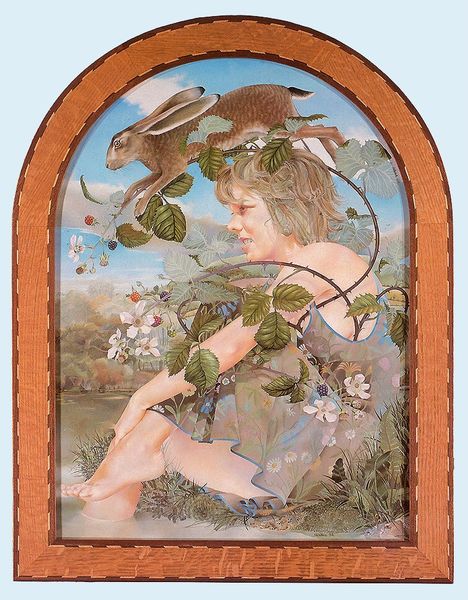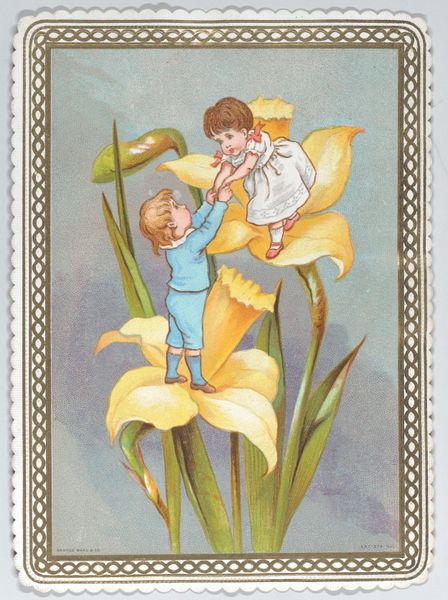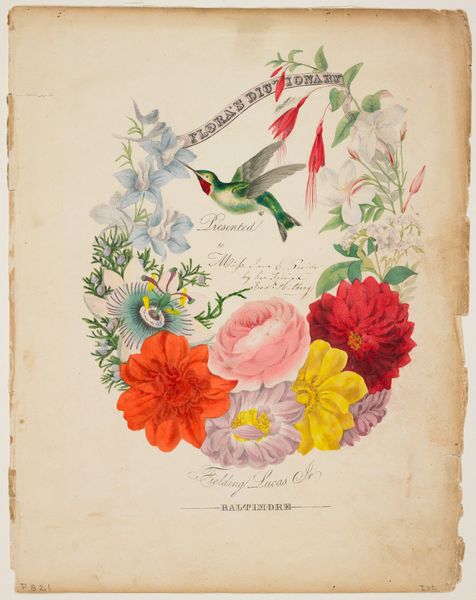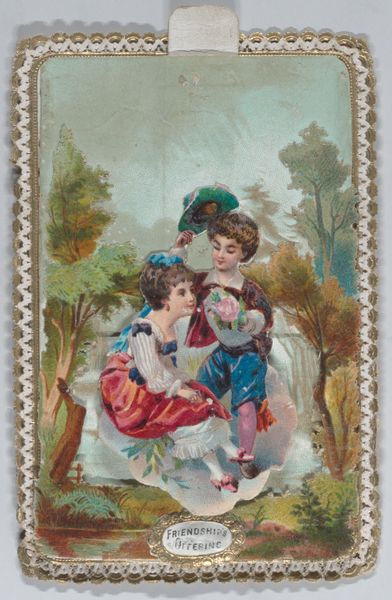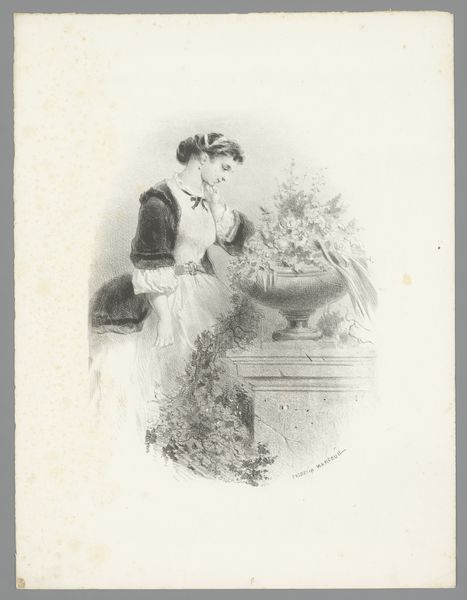
Copyright: Public domain
Curator: Here we have Theodor Severin Kittelsen’s delicate watercolor titled “May,” created in 1890. It’s a piece steeped in Romanticism. What are your initial thoughts? Editor: It strikes me as extraordinarily fragile, both in technique and subject. The watercolour, those washes of greens and whites, gives an impression of ephemerality. Is that couple even real? Curator: I think that sense of transience speaks directly to its era and the anxieties around shifting social roles. Kittelsen was grappling with themes of love and identity amid a rapidly changing world, where traditional roles were constantly challenged, particularly gender roles. Editor: Right. And the means by which he’s rendered the flora – so exactingly! It borders on botanical illustration and I’d guess that precise, painstaking method contrasts with the central figures. The sharp focus on the leaves compared with the dreamy treatment of the couple does make me think about what Kittelsen is foregrounding in the relationship of human figures to material reality. Curator: Exactly. The flowers and butterflies aren't just decorative; they symbolize cycles of nature, the brief beauty of life, and the transformation inherent in romantic relationships. Editor: The material vulnerability is powerful. Watercolor is notoriously difficult to correct. Each wash is a record of time and process. This sense of unrepeatable, almost reckless application contrasts starkly with the tight strictures imposed by Norwegian bourgeois society at the time, I imagine? Curator: Certainly, and it offers an important contrast. Here you see this public display of intimacy, and how this very act exists, fleeting, like a single brushstroke, within that wider social landscape of flowers and insects—its lifespan intimately entwined. How long will those sentiments remain, and can their relationship actually take root? Editor: I agree, I find the image both hopeful and haunted by its own materiality. What else do you see in it? Curator: For me, it reveals Kittelsen's deep engagement with his social context, providing a rich commentary on the shifting sands of love and gender identity. Editor: I will have to spend a little more time thinking through his craft. I hadn't made the connections until we discussed how technique serves these important political themes in the art!
Comments
No comments
Be the first to comment and join the conversation on the ultimate creative platform.
